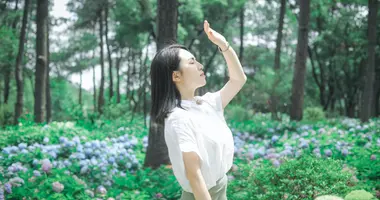Understanding and attending a Japanese funeral
- Published on : 25/05/2024
- by : Japan Experience
- Youtube
Funerals are an unfortunate but inevitable part of life, and this holds true in Japan as well. Most Japanese funerals are Buddhist ceremonies that involve cremating the deceased. As a foreigner, it's important to understand the unique customs and etiquette involved in attending a Japanese funeral to properly pay your respects.
The main components of a Japanese funeral
A typical Japanese funeral includes a wake (otsuya), funeral ceremony (ososhiki), cremation (kasou), and burial of the ashes in a family grave. The wake is held the evening before the funeral, giving family and close friends a chance to spend a final night with the deceased. A Buddhist priest chants sutras while the family offers incense. The funeral then follows a similar format, ending with the cremation.
What to wear to a Japanese funeral
Black is the color of mourning in Japan and the appropriate color to wear to a funeral. Japanese funeral rituals are formal, solemn affairs. Men should wear a black suit, white shirt, black tie and black dress shoes. Women should opt for a conservative black dress or kimono. Avoid any flashy or colorful clothing that would distract from the somber occasion. If you don't have proper mourning attire, simple, dark colors are the next best option.
Offering condolence money (okoden)
When attending a Japanese wake or funeral, guests offer condolence money called okoden to help cover the cost of the service. The amount given depends on your relationship to the deceased, typically ranging from 3,000 to 30,000 yen. Place the money in a special black and silver envelope (koden-bukuro). Hand this in discreetly at the reception desk, never directly to family members. Writing your name on the outside or inside flap is optional but can help them keep track of who gave what.
The wake (otsuya)
The wake or otsuya is held the night before the Japanese funeral service, allowing family and close friends to gather, share stories, and say a final goodbye to the deceased. The body is laid out, often at the family home, and a Buddhist priest will chant sutras. Attendees offer incense to an urn placed in front of the deceased. The wake may last a few hours or the entire night, with the immediate family keeping vigil.

The funeral ceremony (kokubetsu-shiki)
The kokubetsu-shiki or funeral ceremony takes place the day after the wake, following a similar format. Led by a Buddhist priest, it involves chanting, offering incense, and eulogies. The key difference is the deceased receives a new Buddhist name (kaimyo) to prevent them from returning when called. The cremation takes place immediately after the ceremony, attended only by close family.
After the funeral
Once the cremation is complete, the family uses special chopsticks to transfer the bones into an urn, starting with the feet and ending with the Adam's apple. Guests receive a small parting gift of thanks for attending, often valued at 1/4 to 1/2 the condolence money given. Before going home, you may be given a small packet of salt for purification. Sprinkle this on yourself before entering your house to cleanse yourself of impurities after attending a funeral.

Other tips and advice
If you're ever unsure what to do at a Japanese funeral, discretely follow the lead of other attendees or ask a friend. Alan Wiren, a writer specializing in Japanese culture, suggests some key phrases to offer condolences to the family: "Konotabiwa, makotoni goshushosama desu" (I'm deeply sorry for your loss) or simply "Okuyami moshiagemasu" (Please accept my condolences). Refrain from talking unnecessarily during the ceremonies. Check with the family about any other specific etiquette to follow.

Japanese funerals and the associated rituals provide great insight into the unique culture and way death is handled in Japan. While much more formal than Western funerals, the steps of a wake, funeral service, cremation, and memorial are intended to properly honor the deceased and help them reach the afterlife. Understanding the etiquette and traditions beforehand, being mindful of cultural norms, and following the lead of others will help ensure you pay your respects properly.
To learn more about Japanese culture, funeral rites and etiquette, explore these helpful resources and books on Japan and Japanese Buddhism.









